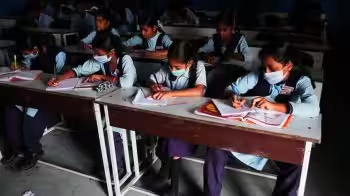Education is a cornerstone of societal development, and nowhere is this more evident than in the state of Bihar, India. Known for its historical significance and rich cultural heritage, Bihar has long faced challenges in providing quality education to its vast population. Over the past two decades, a series of education reforms have been implemented, aiming to transform the state’s educational landscape. This blog explores the impact of these reforms on Bihar’s education system, highlighting key achievements, challenges, and prospects.
Historical Context
Bihar, with its large population and economic challenges, has historically struggled with low literacy rates and inadequate educational infrastructure. The state has faced issues such as teacher absenteeism, poor school facilities, and a high dropout rate, especially among girls. However, recognizing education as a fundamental driver of economic and social development, the Bihar government initiated comprehensive reforms to address these issues in collaboration with various national and international organizations.
Key Reforms and Their Impact
Sarva Shiksha Abhiyan (SSA) and Right to Education (RTE) Act:
The implementation of the SSA and the RTE Act marked a significant shift towards universalizing elementary education in Bihar. These initiatives aimed to ensure that all children between the ages of 6 and 14 had access to free and compulsory education. As a result, enrollment rates in primary schools have seen a substantial increase, with a notable rise in the number of girls attending school.

Teacher Training and Recruitment:
Addressing the quality of education, Bihar undertook massive teacher recruitment drives and emphasized teacher training programs. The establishment of Teacher Education Institutions (TEIs) and regular in-service training sessions have enhanced the pedagogical skills of educators, leading to improved classroom practices and student outcomes.
Infrastructure Development:
Significant investments have been made in improving the physical infrastructure of schools. Construction of new classrooms, provision of clean drinking water, sanitation facilities, and electrification of schools have created a more conducive learning environment. The focus on building separate toilets for girls has also encouraged female students to continue their education.
Bihar Skill Development Mission (BSDM):
To address the employability of students, the Bihar Skill Development Mission was launched. This initiative focuses on vocational training and skill development programs, aligning education with market demands. By equipping students with practical skills, the BSDM aims to enhance their job prospects and contribute to the state’s economic growth.
distribution of tablets to students and teachers has facilitated interactive and engaging learning experiences. These efforts have also helped bridge the urban-rural divide in access to quality education.
Challenges and Areas for Improvement
Despite significant progress, Bihar’s education system still faces several challenges. High dropout rates, particularly at the secondary and higher secondary levels, remain a concern. Socio-economic factors, child labor, and early marriages are some of the contributing factors. Additionally, while teacher training programs have improved, there is still a need for continuous professional development and better monitoring of teacher performance.
The quality of education, particularly in rural areas, requires further enhancement. Ensuring that all schools have access to basic facilities and qualified teachers is crucial. Moreover, the integration of technology in education, while promising, needs to be expanded and made more accessible to all students.
Future Prospects
The future of education in Bihar looks promising with ongoing reforms and a continued focus on innovation and inclusivity. Strengthening public-private partnerships can further enhance resource allocation and expertise in the education sector. Community involvement and awareness campaigns can play a vital role in addressing socio-cultural barriers to education.
Policymakers must prioritize investments in education, recognizing it as a long-term solution to socio-economic challenges. Expanding vocational training programs and fostering entrepreneurship among students can create a more dynamic and self-sustaining economy.






